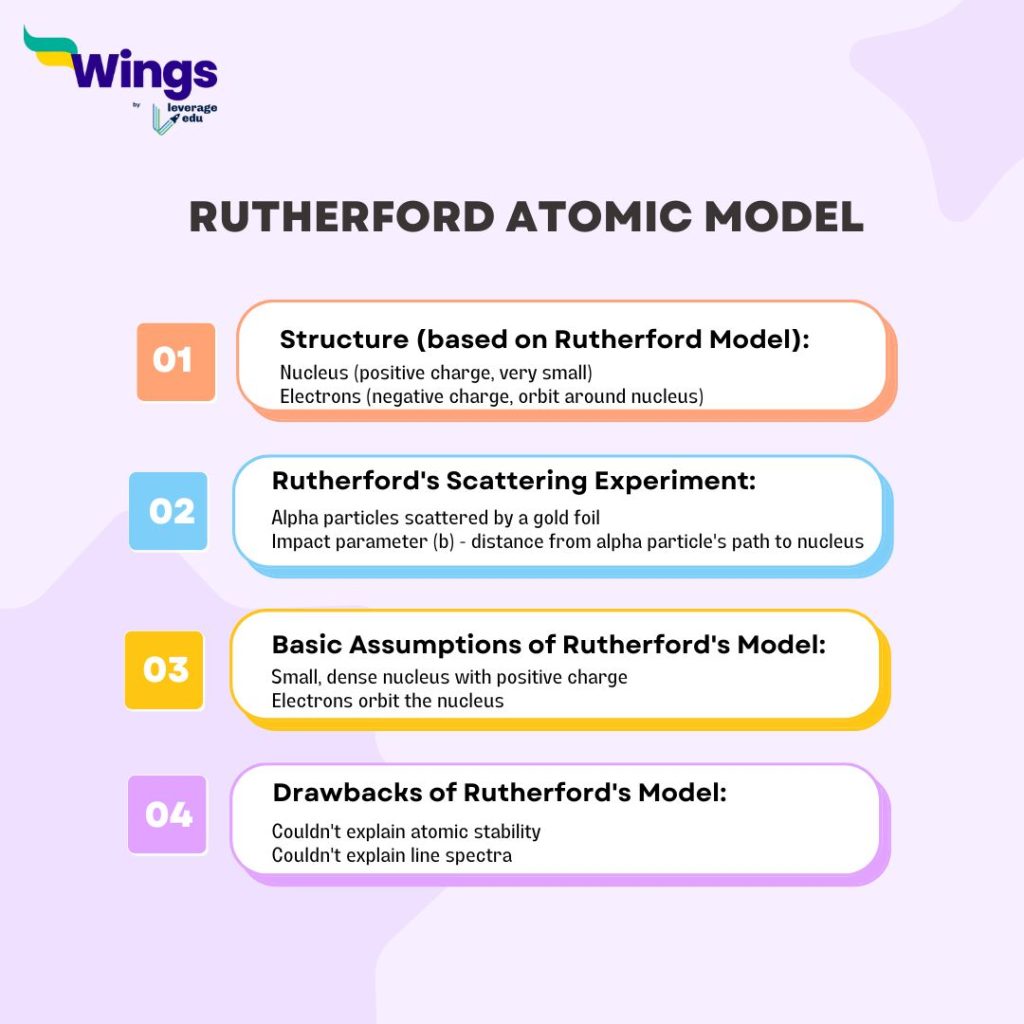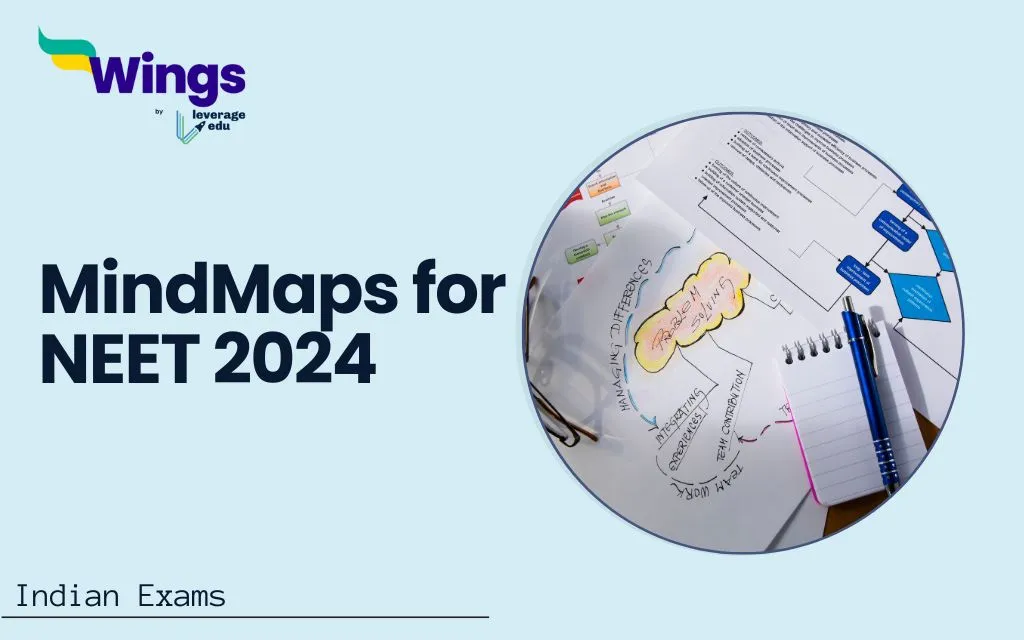Are you feeling overwhelmed by the amount of material you need to cover for the NEET Exam? Don’t worry, you’re not alone. Some topics can be tricky to understand, but with the right approach, you can master them in no time. To make sure you’re fully prepared, consider creating last-minute revision mind maps for NEET that break down complex ideas into easily digestible pieces. These mind maps are visual representations of the subject matter, highlighting all the key components and helping you to get a better grasp of the material. With mind maps for NEET, you can tackle all topics with confidence and maximize your chances of success. So don’t wait, start creating your mind map today and get ready to ace the NEET exam!
Contents
How to Create Mindmaps for NEET 2024?
Creating mindmaps for NEET 2024 involves starting with a central idea and branching out with related concepts, using keywords, colours, and images to organize information visually. Here we have explained each of the steps to create last-minute revision mind maps for NEET in detail:
- Central Idea: Start with a central idea, keyword, or topic at the centre of your mind map.
- Main Branches: Brainstorm main branches which represent primary categories. Label them clearly.
- Sub-Branches: Extend sub-branches from each main branch for specific details and ideas. Label them concisely.
- Keywords & Visuals: Use keywords, short phrases, or clipart to represent ideas within each branch. Colour-coded for better organization.
- Cross-Linking: Find connections between sub-branches and use lines (different colours) to show how ideas interconnect.
Wise Mindmaps for NEET
If you’re a student preparing for the NEET exam, then you know how crucial it is to have a comprehensive study plan in place. And that’s where subject-wise mind maps for NEET come in.
These mind maps are a powerful tool that can help you understand complex concepts quickly and easily. But what if you’re short on time? That’s where last-minute revision mind maps come into play. They can be a game changer in your last-minute exam preparation.
Don’t underestimate the power of mind maps. Incorporate them into your study plan to succeed in the NEET exam.
- Visual Representation: Mind maps present information visually, making it easier to see connections between concepts, which is especially helpful for Biology, Chemistry, and Physics.
- Simplified Learning: They break down complex information into manageable chunks, making learning more efficient.
- Comprehensive Coverage: Mind maps cover the entire NEET syllabus, ensuring students have all the necessary information in one place.
- Revision and Retention: Mind maps act as excellent revision tools, aiding memory retention through visual cues.
- Time-Saving: They condense complex topics concisely, saving students time for practice and focusing on weak areas.
Must Read: NEET Previous Year Question Paper
Tips for Optimizing Mindmap for NEET
Optimize your Mindmaps for NEET 2024 by keeping it focused, using concise keywords, incorporating colour coding, and using images for better understanding. Follow these steps for optimizing your last-minute revision mind maps for neet:
- Keep It Simple: Focus on the central idea and immediate branches. Avoid overcrowding with too many details. A clean mind map is best for brainstorming.
- Use Color Codes: Assign different colours to branches and categories to enhance visual organization and help your brain identify relationships.
- Prioritize Hierarchy: Arrange the main branches hierarchically, with the most important ideas closest to the Main Topic. This ensures critical information stands out.
Must Read: NEET Exam Pattern 2024: Marking Scheme, Total Marks
Online vs Offline – Where to Prepare Mind Map for NEET?
Here we have stated the pros and cons of preparing mindmaps online vs offline for NEET
Online Mind Map for NEET:
Advantages:
- Accessibility from any device.
- Real-time collaboration with peers.
- Integration with other applications.
- Automatic syncing and updates.
Disadvantages:
- Dependency on internet connection.
- Learning curve for new tools.
- Privacy and security concerns.
- Potential subscription costs.
- Limited offline accessibility.
Offline Mind Map for NEET:
Advantages:
- No internet connection is required.
- Familiarity with traditional tools.
- There are no subscription fees.
- Less risk of loss or damage.
Disadvantages:
- Limited accessibility for collaboration.
- Difficulty in sharing digitally.
- Lack of dynamic features.
- Risk of physical loss or damage.
- Manual syncing and updates.
Must Read: Paramedical Courses without NEET
Examples of Mindmaps for NEET
Mindmap for NEET can act as your ultimate study companion designed to help you conquer the NEET exam with confidence. Through the innovative approach of Mindmaps for NEET students can remember the chunk of information for a longer time.
Below we have given an example of how one can create mindmaps from the basic information in the text. Suppose we read Rutherford’s Atomic model from our NCERT books. After reading the original text 2-3 times, we must note the information on a rough sheet. These steps will help in better retention of the information. Once we are clear about the features of the Rutherford Atomic Model, we must then try to create a mind map based on the following information that we can recall.

Must Read: How to Do NEET Preparation? Tips, Preparation Books and More
Mind Map for NEET Biology Subject
Mindmaps for NEET biology preparation are essential because they simplify complex information into visual diagrams that aid comprehension. Students must create mind maps for all important topics on the syllabus. These last-minute NEET revision mind maps, when used correctly, can be a game changer. We have shown how to make mindmaps on complex topics like the male reproductive system, female reproductive system, immune system, and atomic structure.
Mind Map for NEET Biology: Male Reproductive System
- Structures
- Testes (produce sperm)
- Location: Scrotum (maintains optimal temperature)
- Lobules contain seminiferous tubules (sperm production)
- Accessory Ducts (transport and store sperm)
- Vasa efferentia, rete testis, epididymis, vas deferens
- Vas deferens joins the seminal vesicle to form an ejaculatory duct (opens into the urethra)
- Glands (secrete seminal fluid)
- Prostate gland
- Seminal vesicles
- Bulbourethral glands
- Seminal fluid: contains enzymes, calcium, fructose, lubrication
- Testes (produce sperm)
- Spermatogenesis (sperm formation process)
- Starts at puberty with increased GnRH from the hypothalamus
- GnRH stimulates the pituitary to release LH & FSH
- LH stimulates Leydig cells to produce testosterone (androgens)
- FSH stimulates Sertoli cells to support sperm development
- Spermatogonia (diploid) undergo mitosis to form primary spermatocytes
- Meiosis:
- Primary spermatocytes -> 2° spermatocytes (haploid)
- 2° spermatocytes -> spermatids (haploid)
- Spermiogenesis: Spermatids mature into sperm
- Spermiation: Release of sperm from seminiferous tubules
- Sperm Structure
- Head: contains acrosome (enzymes) and nucleus (haploid)
- Middle piece: mitochondria for energy
- Tail: flagellum for movement
Mind Map for NEET Biology: Female Reproductive System
- Structures
- Ovaries (produce eggs & hormones)
- Fallopian Tubes (transport eggs)
- Infundibulum (funnel-shaped end with fimbriae)
- Ampulla (widest part)
- Isthmus (narrow end)
- Uterus (embryo development)
- Layers: perimetrium, myometrium (muscle), endometrium (lining)
- Cervix: connects the uterus to the vagina
- Vagina (birth canal)
- External Genitalia
- Mons pubis, labia majora, labia minora, clitoris
- Hymen (membrane partially covering vaginal opening)
- Mammary Glands (breasts, milk production)
- Oogenesis (egg formation process)
- Starts before birth, unlike spermatogenesis
- Oogonia undergo mitosis to form primary oocytes
- Primary oocytes enter meiosis I (arrested at prophase I)
- Follicles develop around primary oocytes
- Meiosis I resumes at puberty, forming secondary oocyte (haploid) & polar body
- Ovulation: release of a secondary oocyte from a mature follicle
- Meiosis II (upon sperm entry) forms ovum (haploid) & another polar body
Mind Map for NEET Biology: Immune System
- Parts
- Lymphoid Organs
- Primary
- Bone Marrow
- Thymus
- Secondary
- Spleen
- Lymph Nodes
- Tonsils
- Peyer’s Patches
- Appendix
- Primary
- Lymphoid Organs
- Cells
- Lymphocytes
- B-Lymphocytes (Produce antibodies)
- T-lymphocytes (Cell-mediated immunity)
- Phagocytes (Engulf and destroy pathogens)
- Lymphocytes
- Antibodies (Immunoglobulins)
- IgG (most abundant)
- IgM
- IgD
- IgA
- IgE (involved in allergic reactions)
- Types of Immunity
- Innate Immunity (present at birth)
- Physical Barriers (skin, mucous membranes)
- Physiological Barriers (saliva, tears, stomach acid)
- Cellular Barriers (neutrophils, monocytes, natural killer lymphocytes)
- Cytokine Barriers (interferons)
- Acquired Immunity (developed during lifespan)
- Active Immunity (the body produces antibodies)
- Natural (from exposure to pathogen)
- Vaccination (inoculation with weakened/inactive pathogen)
- Passive Immunity (antibodies from another source)
- Maternal (from mother to fetus)
- Antitoxin (injection of antibodies)
- Active Immunity (the body produces antibodies)
- Innate Immunity (present at birth)
- Diseases
- Allergies (exaggerated immune response)
- Autoimmune Diseases (the body attacks self cells)
- Rheumatoid Arthritis
- AIDS (HIV destroys T-cells)
- Cancer (uncontrolled cell growth)
- Drug and Alcohol Abuse (damages the nervous system and live
Must Read: Want to Do BDS Without NEET? Find All The Details Here
Mind Maps for NEET Physics
Mind maps for NEET Physics condense complex concepts into visual diagrams for efficient revision, helping in understanding and enhancing exam performance. For example- we tried to condense the information related to electricity in mind maps format for your quick revision:
Electricity
- What is Electricity?
- Movement of charged particles (electrons)
- Static vs. Dynamic Electricity
- Static: Build up of electrical charge on object’s surface (no current flow)
- Caused by rubbing non-conductors (e.g., plastic, glass)
- An imbalance of charges creates attraction or repulsion
- Dynamic: Electrons in motion (current flow)
- AC (Alternating Current)
- DC (Direct Current)
- Static: Build up of electrical charge on object’s surface (no current flow)
- Electron Movement
- Valence electrons determine electrical properties
- Conductors, Semiconductors, Insulators
- Conductors
- Many free electrons (loose outer orbit)
- Examples: Gold, Copper, Silver
- Insulators
- Few or no free electrons
- Examples: Glass, Ceramic, Plastic
- Semiconductors
- In between conductors and insulators
- Examples: Silicon, Germanium
Must Read: Career Options If NEET is not Cleared
Mind Maps for NEET Chemistry
Mind maps for NEET Chemistry simplify intricate topics into visual aids, aiding comprehension and enhancing exam readiness for improved performance. Below we have created the sample mind map for the ammonium chloride topic
Ammonium Chloride
- Structure
- Chemical Formula: NH4Cl
- Properties
- Molecular Weight/Molar Mass: 53.491 g/mol
- Density: 1.53 g/cm³
- Boiling Point: 520 °C
- Melting Point: 338 °C
- Appearance: Crystalline white solid
- Solubility: Highly soluble in water
- Acidity: Mildly acidic (pH 4.6 – 6.0 in 5% solution)
- Preparation
- Reaction of ammonia (NH3) with hydrochloric acid (HCl)
- NH3 + HCl → NH4Cl
- By-product of the Solvay Process
- CO2 + 2 NH3 + 2 NaCl + H2O → 2 NH4Cl + Na2CO3
- Reaction of ammonia (NH3) with hydrochloric acid (HCl)
- Chemical Reactions
- Decomposes to ammonia gas and hydrogen chloride
- NH4Cl → NH3 + HCl
- Reacts with sodium hydroxide (NaOH) to produce ammonia gas (NH3)
- NH4Cl + NaOH → NH3 + NaCl + H2O
- Reacts with sodium carbonate (Na2CO3) to produce sodium chloride (NaCl) and ammonia gas (NH3)
- 2 NH4Cl + Na2CO3 → 2 NaCl + CO2 + H2O + 2 NH3
- Decomposes to ammonia gas and hydrogen chloride
- Uses
- Fertilizer (nitrogen source)
- Medicine (expectorant in cough syrups)
- Glue (plywood bonding)
- Health Effects
- Potential for overdosing
- Increased blood pressure
- Irritation, shortness of breath, cough, nausea, headache (ammonium chloride poisoning)
- Serious eye discomfort (gas exposure)
- Chronic exposure: asthma-like reaction, impaired kidney function
- Other
- Systemic acidifier (treatment of metabolic alkalosis)
- Oral acid loading test (identify distal renal tubular acidosis)
- Maintain acidic urine pH (urinary tract treatment)
RELATED POSTS
FAQs
Yes, mind maps are excellent tools for organizing biological concepts, relationships, and processes visually.
The steps include choosing a central topic, branching out with main ideas, adding subtopics, using keywords, colours, images, connections and reviewing.
A mind map should have a central topic, branching out into main ideas and subtopics, and connections between them.
Absolutely, mind maps facilitate active learning, improve memory retention, and enhance understanding, making them effective study aids.
This was all about the “Mindmaps for NEET”. For more such informative blogs, check out our NEET Exams Section, or you can learn more about us by visiting our Indian exams page.
 One app for all your study abroad needs
One app for all your study abroad needs














